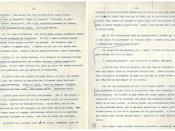Birth spacing and family size makes a big difference in adolescent delinquency according to the book Roots of Delinquency. It was found that the existence of younger siblings was associated with delinquency. The oldest of the family was found to be the least delinquent, but as the family grew it was found that the youngest had a greater advantage of being delinquent. The book concluded that birth spacing and family size makes a difference in delinquency because with smaller families and less growth a good parent-child relationship can be built.
The social class of a child can be a big determinant on whether the child will become a delinquent or not. First of all there are lower, middle, and upper class families. According to Annette Lareau a lower class family is considered to have parents on public assistance who don't always have a job to go to. The parents are usually high school drop-outs or high school graduates.
A lower class families income is usually 20,000 dollars or less. A middle class family usually has one parent who is employed in a position with limited occupational autonomy. Both the parents from a middle class family has graduated from high school or a community college. The income for a middle class family is anywhere between $20,001 to $79,999. An upper class family is made up of at least one parent who is employed in a position with a significant amount of occupational autonomy in a professional or managerial position, and has a college degree. An upper class families income is usually 80,000 dollars and above.
According to the Impact on Crime and the Correctional System, lower-class juveniles commit about four times as many violent crimes as middle or upper class juveniles. It also says that the chances of experiencing violent crime...


